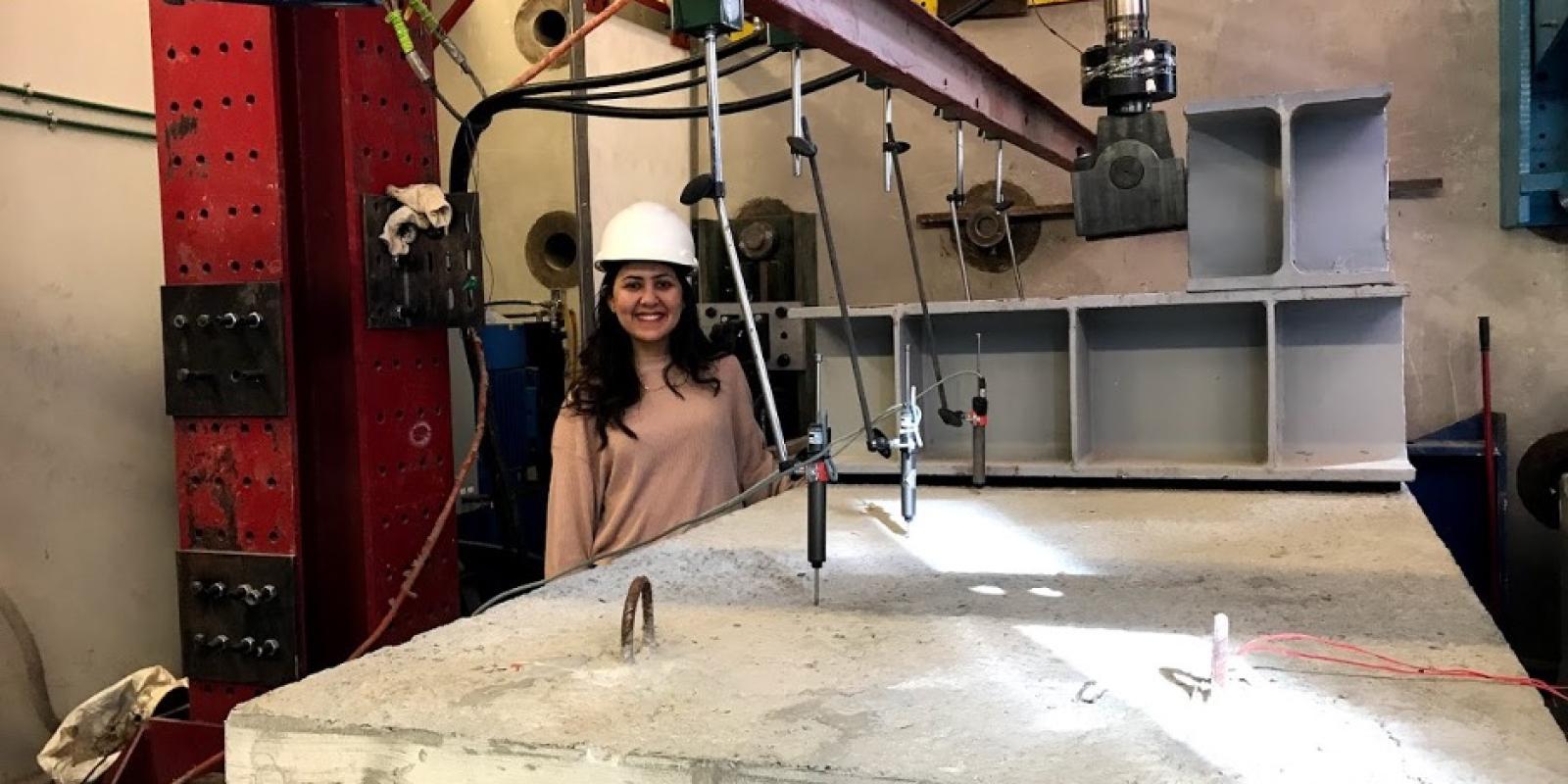
Graduate Student Carries Out Region's First Large-Scale Experimental Program for Smart Construction Solutions
Motivated by Egypt’s recent developmental projects at different locations, including the Grand Egyptian Museum, the New Administrative Capital and the Alamein City, among others, Jasmin Abdelhalim, construction engineering graduate student, took on a mission to explore whether the projects are employing the smartest construction and structural solutions to pave the way for more durable structures. She came up with a sustainable solution -- the first in Egypt and the Middle East.
The Motive
A common aspect among the recent developmental projects is that they all come with a unique set of challenges that demand equally special architectural specifications. Taking Alamein City as an example, it’s designed to have a number of towers facing the sea.
Such challenges led structural engineers to examine smart construction and structural solutions to serve the required specifications for the execution of the projects while ensuring sustainability – and the solution was no other than “pre-stressed” concrete technology.
Put simply, pre-stressed concrete technology that saves the embodied energy of building structures allows for fast construction, governs higher strength and resistance than the traditional concrete structures, and provides them with up to 40 meters of clear span. Yet, the challenge accompanying it is that both the American and Egyptian code provisions limit the design capacity of structures to exceedingly conservative values, making pre-stressed concrete challenging to pursue.
With that being the case, Abdelhalim, through her thesis, took it on to investigate the empirical equation provided by the American Code of Practice for Pre-stressed Concrete in order to assess its accuracy and examine the influence of various factors on the behavior of the pre-stressed elements.
The Plan
To achieve her goal, Abdelhalim initiated a large-scale experimental program consisting of six pre-stressed concrete slabs with a 4-meter span. Held at the AUC Structural Lab, the project tested bonded and unbonded tenons in full scale to determine their capacities. Today, the program is the first to take place in Egypt and the Middle East.

“Without the facilities of the AUC Structural Lab that provided me the ability to carry out this project and to test the giant slabs under flexural loading, my thesis program would not have been declared,” Abdelhalim emphasized. “Also, receiving a grant from AUC to cover the program’s expenses was another helping hand that contributed to the success of my project.”
To execute the experiment, Abdelhalim sought sponsors along with her thesis adviser, Ezzeldin Yazeed, professor and interim chair of the Department of Construction Engineering, to obtain the accessories used in the United States and Egypt to construct the pre-stressed concrete slabs and compare between the construction procedures implemented in both countries.
Being a promising research, GTI of the United States and Strand for Trading & Construction of Egypt partially sponsored the research, providing Abdelhalim with the advanced prestressing materials and taking an active role in the conducted tests.
“Constructing full-scale pre-stressed slabs was really challenging since few designers and engineers work with pre-stressed concrete in Egypt,” said Abdelhalim. “However, the program brought together many parties, and managing the work between them was demanding. Not to mention, coping with COVID-19’s safety precautions and lockdowns was another very challenging aspect.”
The Impact

“I believe this research will convince designers and contractors in Egypt and worldwide to use pre-stressed concrete more broadly to benefit from its various advantages and, mostly, to have sustainable construction solutions,” said Abdelhalim, stressing the value of unbonded systems.
“I hope I could help in making human life easier by highlighting a point that would influence a more sustainable solution for the construction of buildings,” she concluded. “I believe preserving Mother Earth by reducing the consumption of raw materials is one of the most satisfying aims.”
